When it comes to choosing a healthy snack, understanding the nutrition facts and value of Wheat Thins is essential. These crispy wheat crackers have gained popularity as a go-to snack option, but how do they stack up in terms of nutrition? In this article, we will delve into the specifics of Wheat Thins’ nutrition information, exploring the facts and value they offer to help you make informed choices for a healthy snack.
Key Takeaways:
- Wheat Thins provide few nutrients and contain high amounts of sugar and salt.
- A serving of Wheat Thins (16 crackers) contains 140 calories, 5 grams of fat, 5 grams of sugar, and 200 mg of sodium.
- While they are low in calories, Wheat Thins may lack fiber and protein, making them less filling.
- Pairing Wheat Thins with a protein source or consuming them alongside sliced vegetables or fruit can add extra fiber and make for a more balanced snack.
- It’s important to be mindful of portion sizes and choose healthy toppings or pairings to maximize the health benefits of incorporating Wheat Thins into your diet.
Wheat Thin Nutrition Facts
Let’s dive into the nutrition facts of Wheat Thins to better understand the nutritional aspects of this popular snack. As we explore the nutritional content of these crispy wheat crackers, it’s important to note that while they are often considered a healthy option, they do have some drawbacks.
A serving of Wheat Thins, which is about 16 crackers, contains approximately 140 calories. This makes them a relatively low-calorie snack, ideal for those who are conscious of their caloric intake. Additionally, Wheat Thins have a moderate fat content of around 5 grams per serving.
However, it’s essential to be mindful of the sugar and salt content in Wheat Thins. A serving of these crackers contains 5 grams of sugar and 200 mg of sodium. This high sugar and sodium content may be a concern for individuals who are watching their sugar intake or looking to reduce their sodium consumption.
| Nutrients | Amount per serving |
|---|---|
| Calories | 140 |
| Fat | 5g |
| Sugar | 5g |
| Sodium | 200mg |
While Wheat Thins may not be a significant source of vitamins or minerals, they can still be enjoyed in moderation as part of a balanced diet. They offer versatility as a snack, and their crispy texture and variety of flavors make them a popular choice among consumers. However, it’s important to be aware of the high sugar and sodium content and to pair Wheat Thins with healthier options to enhance their nutritional value.
Consider enjoying Wheat Thins alongside sliced vegetables or fruit to add extra fiber, vitamins, and minerals to your snack. You can also pair them with a protein source, such as hummus or Greek yogurt, to increase their satiety and provide a more well-rounded nutritional profile.
In addition to the nutrition facts, it’s important to consider the dietary information and potential allergens in Wheat Thins. While they are made primarily from wheat and contain gluten, they do not contain any nuts or ingredients derived from animals, making them suitable for individuals with nut allergies or following a vegetarian or vegan diet.
However, it is always recommended to check the label for specific allergen information, as manufacturers may change their ingredients or processing methods. If you have any concerns or dietary restrictions, it’s best to consult the packaging or reach out to the manufacturer directly for the most accurate and up-to-date information.
Wheat Thin Nutritional Value
While Wheat Thins may not be nutrient-dense, they do provide some health benefits and nutritional value. A serving of these crispy wheat crackers (16 crackers) contains 140 calories, 5 grams of fat, 5 grams of sugar, and 200 mg of sodium. Although they are not a significant source of vitamins or minerals, Wheat Thins can still be enjoyed as part of a balanced diet.
“Wheat Thins are a versatile snack option that can be enjoyed alone or paired with other foods.”
One of the main advantages of Wheat Thins is their low calorie count. With only 140 calories per serving, they can be a satisfying snack that won’t weigh you down. Plus, their crunchy texture and mild flavor make them a great base for dips, spreads, or toppings.
Another benefit of Wheat Thins is their versatility. They come in a variety of flavors, such as original, multigrain, and reduced-fat, allowing you to choose the one that suits your taste preferences. Whether you prefer a classic snack or a more adventurous flavor, there’s a Wheat Thins option for everyone.
However, it’s important to be mindful of the drawbacks of Wheat Thins. They are high in added sugars and sodium, which can negatively impact your health if consumed in large quantities. Additionally, Wheat Thins may not be as filling as other snacks due to their low fiber and protein content.
Pairing Wheat Thins with Healthy Options
To enhance the nutritional value of Wheat Thins, consider pairing them with healthier options. Adding a protein source, such as hummus or Greek yogurt, can increase the satiety and help balance your snack. Alternatively, you can enjoy Wheat Thins alongside sliced vegetables or fruits to add extra fiber and micronutrients to your snack.
| Nutrition Facts | Amount per Serving (16 crackers) |
|---|---|
| Calories | 140 |
| Total Fat | 5g |
| Sugar | 5g |
| Sodium | 200mg |
So, while Wheat Thins may not provide a wide range of nutrients, they can still be enjoyed in moderation as part of a healthy and balanced diet. Just remember to watch your portion sizes, choose healthier toppings or pairings, and be mindful of their added sugars and sodium content. With the right choices, you can savor the crispy goodness of Wheat Thins without compromising your health.

Understanding the calorie content of Wheat Thins is crucial for managing your overall calorie consumption. Each serving of Wheat Thins, which is about 16 crackers, contains approximately 140 calories. While this calorie count may seem relatively low, it’s important to keep in mind that it can quickly add up if you consume multiple servings.
It’s worth noting that Wheat Thins are relatively low in fat, with each serving containing about 5 grams. However, it’s essential to pay attention to portion sizes, as consuming excessive amounts can contribute to a higher calorie intake.
Additionally, it’s important to be mindful of the sugar and sodium content in Wheat Thins. A serving of Wheat Thins contains 5 grams of sugar, which can contribute to added sugars in your diet if consumed in large quantities. Similarly, each serving contains 200 mg of sodium, which may be a concern for those watching their sodium intake due to high blood pressure or other health conditions.
| Nutrient | Amount per Serving |
|---|---|
| Calories | 140 |
| Fat | 5g |
| Sugar | 5g |
| Sodium | 200mg |
While Wheat Thins can be a convenient snack option, it’s important to consider their nutritional profile and assess how they fit into your overall dietary goals. If you’re looking to manage your calorie intake, it may be helpful to enjoy Wheat Thins in controlled portions or pair them with other nutritious foods to create a balanced snack.
Understanding the calorie content of Wheat Thins is crucial for managing your overall calorie consumption. Each serving of Wheat Thins, which is about 16 crackers, contains approximately 140 calories. While this calorie count may seem relatively low, it's important to keep in mind that it can quickly add up if you consume multiple servings. It's worth noting that Wheat Thins are relatively low in fat, with each serving containing about 5 grams. However, it's essential to pay attention to portion sizes, as consuming excessive amounts can contribute to a higher calorie intake. Additionally, it's important to be mindful of the sugar and sodium content in Wheat Thins. A serving of Wheat Thins contains 5 grams of sugar, which can contribute to added sugars in your diet if consumed in large quantities. Similarly, each serving contains 200 mg of sodium, which may be a concern for those watching their sodium intake due to high blood pressure or other health conditions.
| Nutrient | Amount per Serving |
|---|---|
| Calories | 140 |
| Fat | 5g |
| Sugar | 5g |
| Sodium | 200mg |
While Wheat Thins can be a convenient snack option, it’s important to consider their nutritional profile and assess how they fit into your overall dietary goals. If you’re looking to manage your calorie intake, it may be helpful to enjoy Wheat Thins in controlled portions or pair them with other nutritious foods to create a balanced snack.
Ingredients and Allergens in Wheat Thins
Let’s take a closer look at the ingredients and allergen information of Wheat Thins to ensure they align with your dietary needs. The ingredients used in Wheat Thins include whole grain wheat flour, soybean oil, sugar, and salt. While they may seem like a simple and straightforward snack, it is important to be aware of potential allergens that may be present.
According to the packaging, Wheat Thins may contain soy, milk, and wheat ingredients. If you have allergies or follow a specific dietary restriction, it is crucial to carefully read the label and check for any allergens that may be present in the specific variant of Wheat Thins you are considering. Cross-contamination can sometimes occur during the manufacturing process, so it is essential to stay vigilant and consult the packaging for accurate allergen information.

In conclusion, Wheat Thins are made with a few simple ingredients, primarily whole grain wheat flour, soybean oil, sugar, and salt. However, it is essential to note that they may contain potential allergens such as soy, milk, and wheat. If you have any specific dietary concerns or allergies, it is always best to double-check the label and consult with your healthcare provider or allergist to determine whether Wheat Thins are suitable for your needs.
Serving Size of Wheat Thins
Understanding the appropriate serving size of Wheat Thins is crucial for managing your calorie intake and promoting a healthy snack. Each serving of Wheat Thins is typically measured by weight, which is about 30 grams or approximately 16 crackers. It’s important to keep in mind that consuming more than the recommended serving size can significantly increase your calorie and nutrient intake.
When enjoying Wheat Thins, it’s helpful to portion out your snack to avoid mindless eating and control your calorie consumption. By sticking to the recommended serving size, you can better manage your snacking habits and make more informed choices for your overall health.
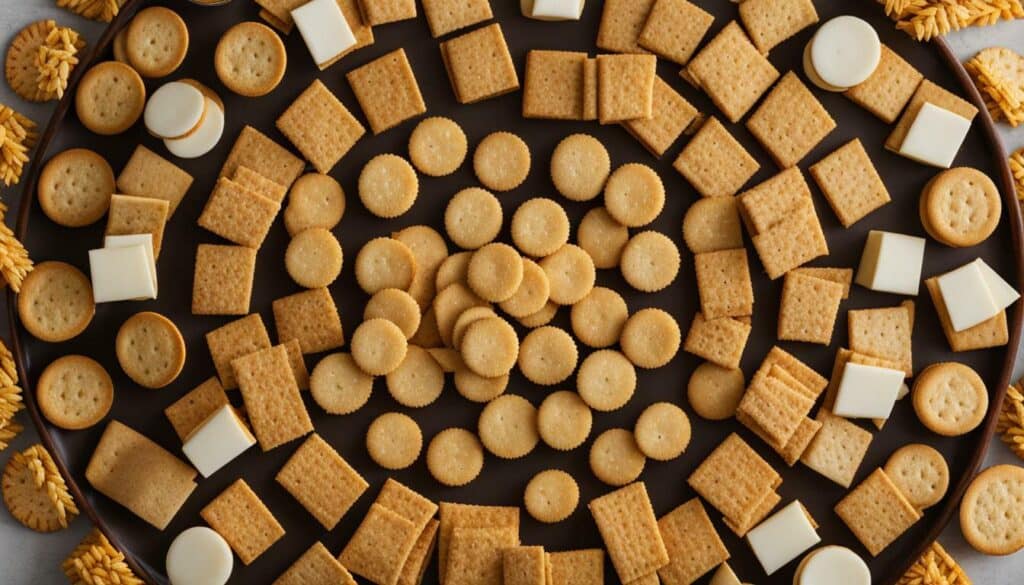
Table 1: Wheat Thins Serving Size
| Serving Size | Weight | Approximate Number of Crackers | Calories per Serving |
|---|---|---|---|
| 1 serving | 30g | 16 crackers | 140 calories |
It’s important to note that while Wheat Thins can be a part of a healthy diet, they are not nutritionally dense and may not keep you feeling full for an extended period due to their low fiber and protein content. To make your snack more satisfying and balanced, you can pair Wheat Thins with a protein source, like a slice of lean turkey or a dollop of Greek yogurt. Alternatively, you can enjoy them with sliced vegetables or fruit to add extra fiber and additional nutrients to your snack.
By being aware of the appropriate serving size and making mindful choices about how you enjoy your Wheat Thins, you can incorporate them into a balanced diet while still managing your calorie intake and promoting a healthy lifestyle.
Dietary Information of Wheat Thins
Let’s explore the dietary information of Wheat Thins to better understand how they can fit into your overall diet plan. Wheat Thins are a popular choice for a quick and convenient snack, but it’s important to be aware of their nutritional content to make informed choices.
A serving of Wheat Thins (16 crackers) contains 140 calories, 5 grams of fat, 5 grams of sugar, and 200 mg of sodium. While the calorie count is relatively low, it’s essential to be mindful of portion sizes. Enjoying Wheat Thins as part of a balanced snack or paired with healthy options can help manage your calorie intake.
However, it’s worth noting that despite their popularity, Wheat Thins are not a significant source of vitamins or minerals. They may lack sufficient fiber and protein, which are essential for a well-rounded diet. To enhance the nutritional value of Wheat Thins, you can pair them with a protein source or add sliced vegetables or fruit for extra fiber and nutrients.
| Nutrients | Amount per serving (16 crackers) |
|---|---|
| Calories | 140 |
| Fat | 5g |
| Sugar | 5g |
| Sodium | 200mg |
While Wheat Thins do offer a range of flavors to suit different taste preferences, it’s crucial to be aware that they can be high in added sugars and sodium. These additives can contribute to health concerns when consumed in excess. Always check the ingredients list to be aware of any potential allergens and make sure they align with your dietary needs.
In conclusion, Wheat Thins can be included as part of a healthy diet, but it’s crucial to be mindful of their nutritional value and portion sizes. Consider their low calorie count and versatility as a snack, but also be aware of their potential drawbacks such as added sugars and lack of fiber and protein. Pairing Wheat Thins with a protein source or incorporating them alongside sliced vegetables or fruit can enhance their nutritional benefits. As with any food, moderation and balance are key for maintaining a well-rounded diet.
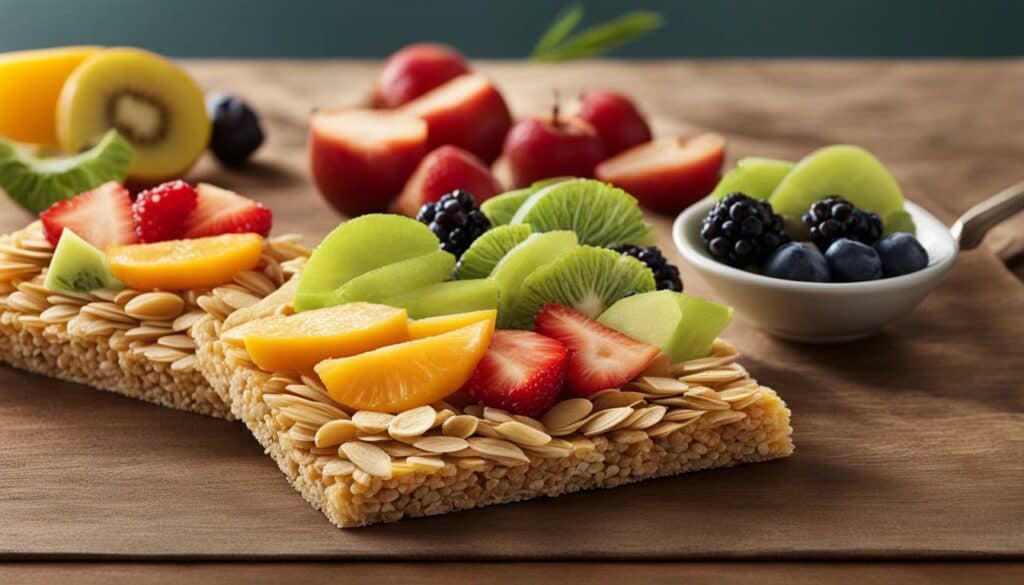
Wheat Thins offer certain health benefits, but it’s important to be aware of any drawbacks they may have as well. These crispy wheat crackers are a popular choice for a quick snack, but it’s essential to understand their nutritional content and impact on overall health.
Let’s start with the benefits. One of the main advantages of Wheat Thins is their low calorie count. With only 140 calories per serving (16 crackers), they can easily fit into a calorie-controlled diet. Additionally, Wheat Thins are a versatile snack that can be enjoyed on their own or paired with other foods. They come in various flavors, catering to different taste preferences, making it easier to find a flavor you love.
However, it’s crucial to note the potential drawbacks of Wheat Thins as well. These crackers are high in added sugars and sodium, which can be detrimental to your health if consumed in excess. It’s important to be mindful of portion sizes and to read the nutrition label carefully to ensure you’re not exceeding your recommended daily intake of sugar and sodium. Furthermore, Wheat Thins may lack in fiber and protein, which are essential nutrients for a balanced diet. To add extra fiber, consider pairing Wheat Thins with sliced vegetables or fruit. If you’re looking for a protein boost, enjoy them with a protein source such as hummus or Greek yogurt.
In summary, while Wheat Thins can be included as part of a healthy diet, it’s crucial to consume them in moderation and be mindful of their nutritional content. Pairing them with nutrient-dense foods can enhance their nutritional value and make them a more satisfying snack option. Remember to prioritize whole, unprocessed foods for optimal health, and enjoy Wheat Thins as an occasional treat.
Snack Smart
When choosing snacks, it’s important to make informed decisions that align with your health goals. While Wheat Thins offer some health benefits, it’s essential to consider other options as well. Here are some ideas for nutritious snacks to incorporate into your routine:
- Fresh fruit: Enjoy a piece of whole fruit like an apple or a handful of berries for a natural and refreshing snack.
- Nuts and seeds: A small handful of almonds, walnuts, or pumpkin seeds provides a satisfying crunch and a dose of healthy fats.
- Greek yogurt: Opt for plain Greek yogurt and add your own toppings like fresh berries, a drizzle of honey, or a sprinkle of granola.
- Veggies and hummus: Cut up some colorful vegetables like carrots, bell peppers, and cucumber, and dip them into a portion-controlled serving of hummus.
- Homemade trail mix: Create your own mix with a variety of nuts, seeds, dried fruit, and a small portion of dark chocolate for a sweet and salty combination.
Remember, balance is key. Incorporate a variety of nutrient-dense snacks into your diet, including whole grains, lean proteins, fruits, vegetables, and healthy fats, to support your overall health and well-being.
| Nutrition Facts | Per Serving (16 crackers) |
|---|---|
| Calories | 140 |
| Total Fat | 5g |
| Sugar | 5g |
| Sodium | 200mg |

Let’s examine the nutritional content of Wheat Thins to gain insights into the essential nutrients they provide. While Wheat Thins are known for their crispy texture and delicious taste, it’s important to understand what they offer from a nutritional standpoint.
A serving of Wheat Thins (16 crackers) contains 140 calories, 5 grams of fat, 5 grams of sugar, and 200 mg of sodium. However, they are not a significant source of vitamins or minerals. This means that while Wheat Thins may satisfy your cravings for a snack, they do not necessarily provide substantial nutrients that our bodies require on a daily basis.
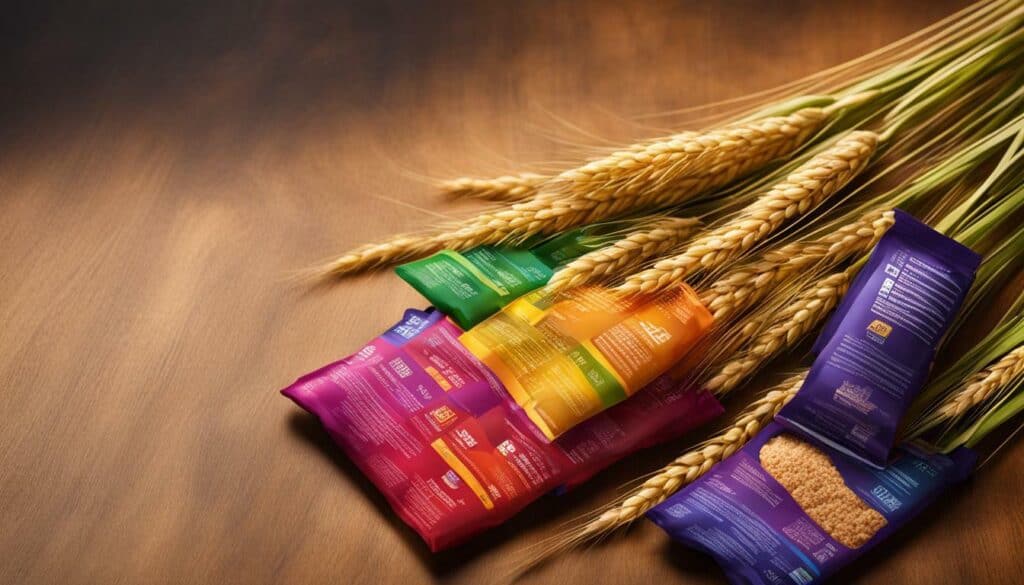
On the bright side, Wheat Thins serve as a low-calorie option, which can be beneficial if you’re watching your calorie intake. They also come in a variety of flavors, catering to different taste preferences. However, it’s important to note that Wheat Thins do contain high amounts of added sugars and sodium, which can be detrimental to your health if consumed in excess.
To make the most of Wheat Thins as a snack, it’s recommended to pair them with a protein source or enjoy them alongside sliced vegetables or fruits to add extra fiber. This helps to balance out the lack of minerals and vitamins in the crackers. Additionally, consuming them in moderation and being mindful of portion sizes is key to incorporating Wheat Thins into a healthy diet.
| Nutrient | Amount per serving (16 crackers) |
|---|---|
| Calories | 140 |
| Fat | 5g |
| Sugar | 5g |
| Sodium | 200mg |
To summarize, Wheat Thins can be a part of a healthy diet when consumed in moderation and paired with nutritious accompaniments. They provide low calories, versatility, and a range of flavors, making them an appealing option for snacking. However, it’s important to be mindful of their high sugar and sodium content and lack of essential nutrients. By making informed choices and pairing Wheat Thins with wholesome additions, you can enjoy them as a tasty treat without compromising your overall nutritional goals.
Pairing Wheat Thins with Healthy Options
To enhance the nutritional value of Wheat Thins, it’s recommended to pair them with healthy options that complement their taste and texture. By adding nutrient-rich foods to your snack, you can create a satisfying and balanced eating experience.
One great way to boost the nutritional content of your Wheat Thins is to pair them with protein-rich options. Try spreading a thin layer of natural peanut butter or almond butter on top of your crackers. The combination of whole grains from the Wheat Thins and the protein from the nut butter will keep you feeling full and satisfied for longer periods.
Another option is to pair Wheat Thins with sliced vegetables or fruit. This adds extra fiber and vitamins to your snack. For example, you could top your crackers with sliced cucumbers, cherry tomatoes, or bell peppers for a refreshing and crunchy bite. Alternatively, you can enjoy your Wheat Thins with apple slices or grapes for a hint of natural sweetness.
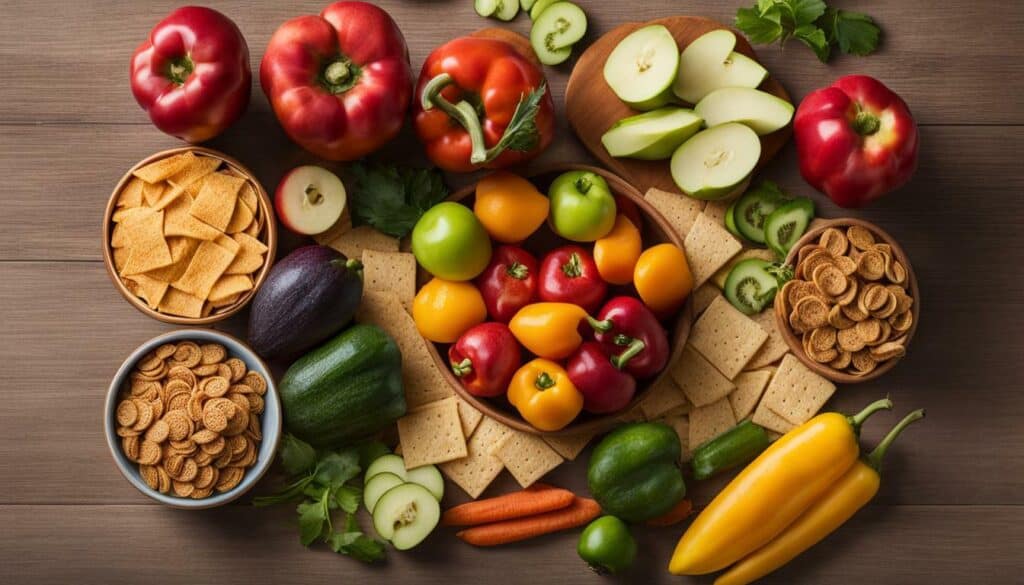
Lastly, consider incorporating hummus or Greek yogurt as a dip for your Wheat Thins. These options provide protein and probiotics, which can contribute to a healthy digestive system. They also add a creamy texture and additional flavor to your snack.
Remember to pay attention to portion sizes and be mindful of the toppings or pairings you choose. While Wheat Thins can be part of a balanced diet, it’s important to balance them with other nutritious foods to maximize their health benefits. By getting creative with your pairings, you can enjoy the delicious taste of Wheat Thins while ensuring you’re nourishing your body with essential nutrients.
Conclusion
By understanding the nutrition info of Wheat Thins and making mindful choices, you can enjoy them as part of a balanced diet while still meeting your nutritional needs.
Wheat Thins, although often considered a healthy snack option, actually provide few nutrients and contain high amounts of sugar and salt. A serving of Wheat Thins (16 crackers) contains 140 calories, 5 grams of fat, 5 grams of sugar, and 200 mg of sodium. They are not a significant source of vitamins or minerals.
However, there are still some benefits to incorporating Wheat Thins into your diet. They have a relatively low calorie count and can be consumed alone or with other foods. Wheat Thins also come in a variety of flavors, allowing you to choose based on your taste preferences.
On the downside, Wheat Thins are high in added sugars and sodium, can be lacking in fiber and protein, and may not be filling enough on their own. To make them a more nutritious snack, it is recommended to pair Wheat Thins with a source of protein or to enjoy them alongside sliced vegetables or fruit to add extra fiber.
Overall, while Wheat Thins can be included in a healthy diet, it is important to be mindful of portion sizes and to choose healthy toppings or pairings. By making informed choices, you can enjoy the crispy goodness of Wheat Thins while still nourishing your body with a variety of nutrients.
FAQ
Q: What are the nutritional facts of Wheat Thins?
A: Wheat Thins contain 140 calories, 5 grams of fat, 5 grams of sugar, and 200 mg of sodium per serving (16 crackers).
Q: What ingredients are used in Wheat Thins?
A: Wheat Thins are made with ingredients such as whole grain wheat flour, soybean oil, and sugar.
Q: Are there any allergens in Wheat Thins?
A: Wheat Thins may contain wheat, soy, and milk ingredients, so individuals with allergies to these substances should exercise caution.
Q: What is the recommended serving size of Wheat Thins?
A: The recommended serving size of Wheat Thins is 16 crackers per serving.
Q: What is the dietary information of Wheat Thins?
A: While Wheat Thins are low in calories, they may be lacking in fiber and protein. It is advisable to pair them with a protein source or consume them alongside sliced vegetables or fruit to add extra fiber to your snack.
Q: What are the health benefits and drawbacks of Wheat Thins?
A: Wheat Thins can be included in a healthy diet due to their low calorie count and versatility as a snack. However, they are high in added sugars and sodium and may not be filling enough on their own.
Q: What are the nutritional contents of Wheat Thins?
A: Wheat Thins are not a significant source of vitamins or minerals but do contain some nutrients, including carbohydrates, fats, and sodium.
Q: How can I maximize the health benefits of Wheat Thins?
A: It is recommended to pair Wheat Thins with a protein source or to eat them alongside sliced vegetables or fruit to add extra fiber and create a more balanced snack.
How Can I Use Nutritional Information to Make Healthier Choices with Big Bowl?
When it comes to making healthier choices, understanding the big bowl nutritional information can be immensely beneficial. By analyzing the nutritional content of the dishes offered, you can make informed decisions that align with your dietary goals. Whether you are looking to consume more protein, reduce your sugar intake, or increase fiber, the nutritional information provided by Big Bowl allows you to customize your meal according to your specific needs and preferences. Trusting the accuracy of their information enables you to take control of your health without compromising on taste.

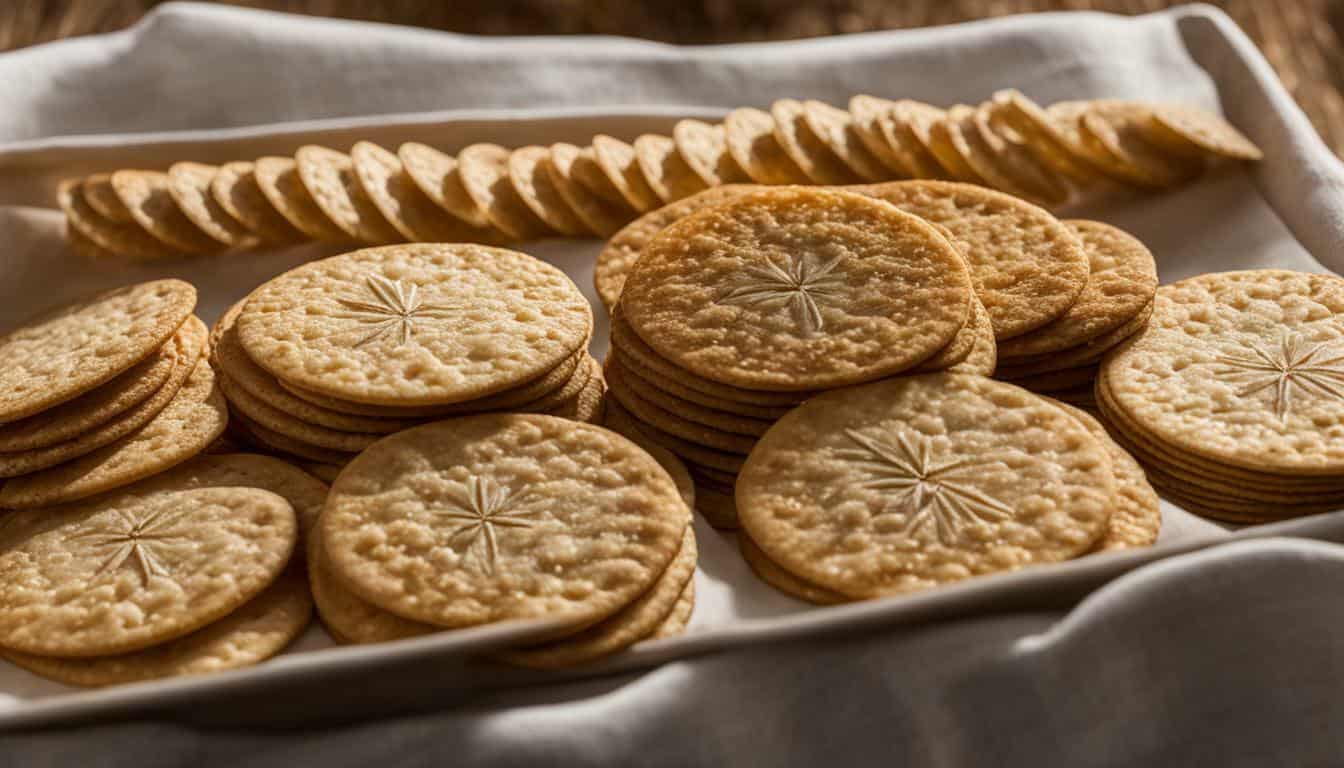



Leave a Reply